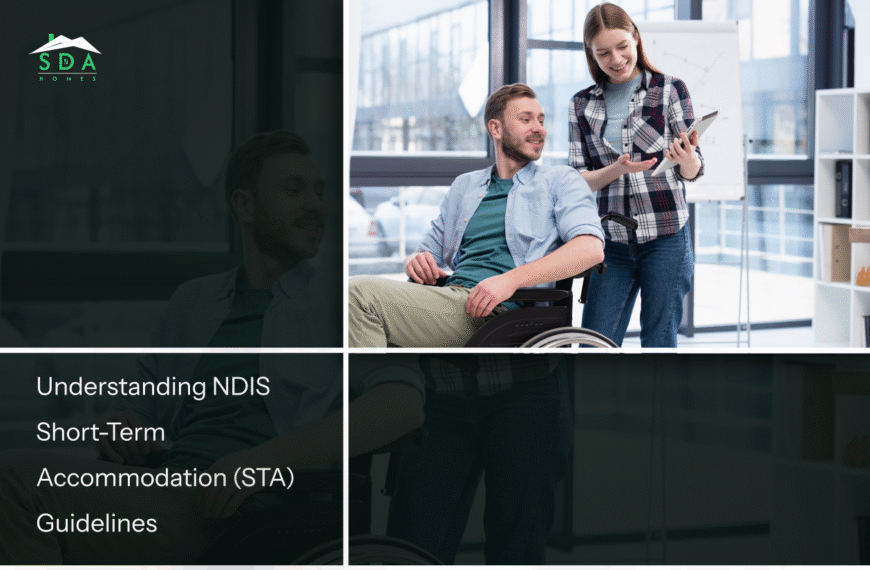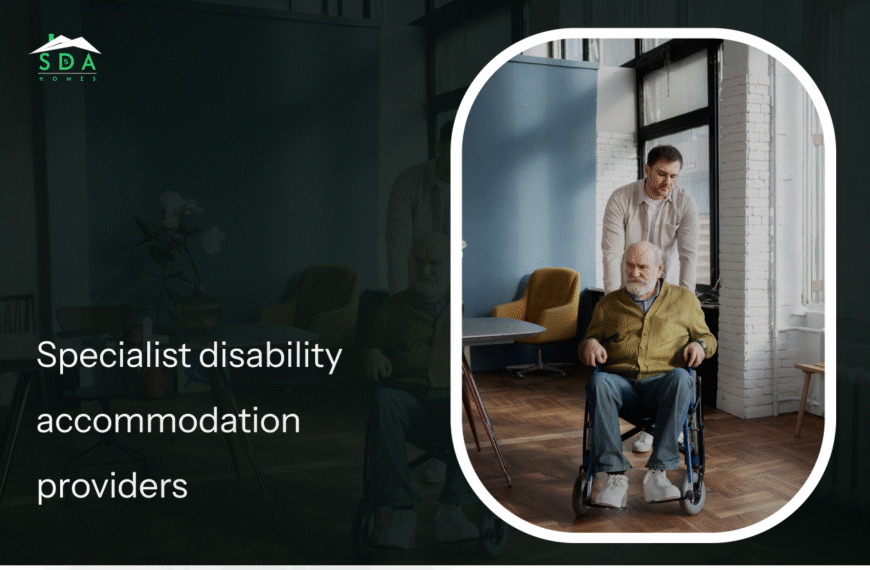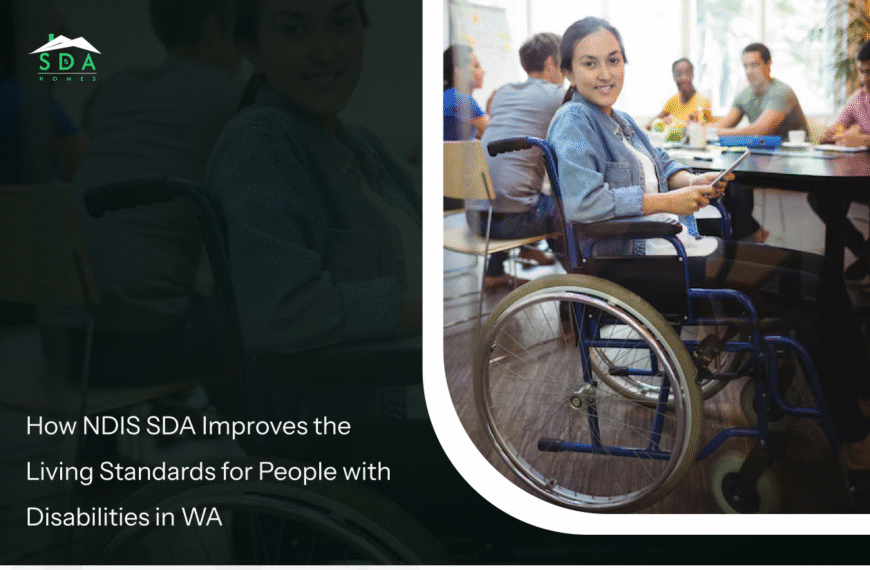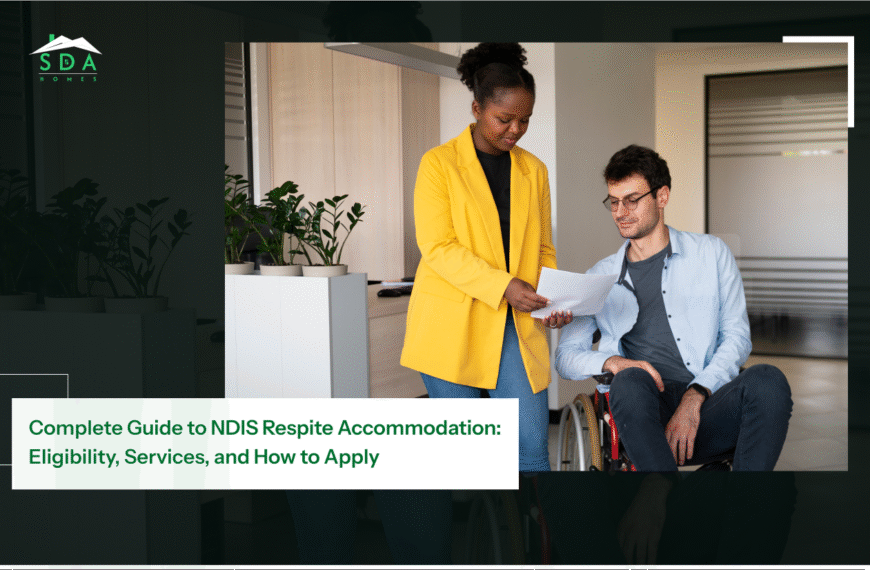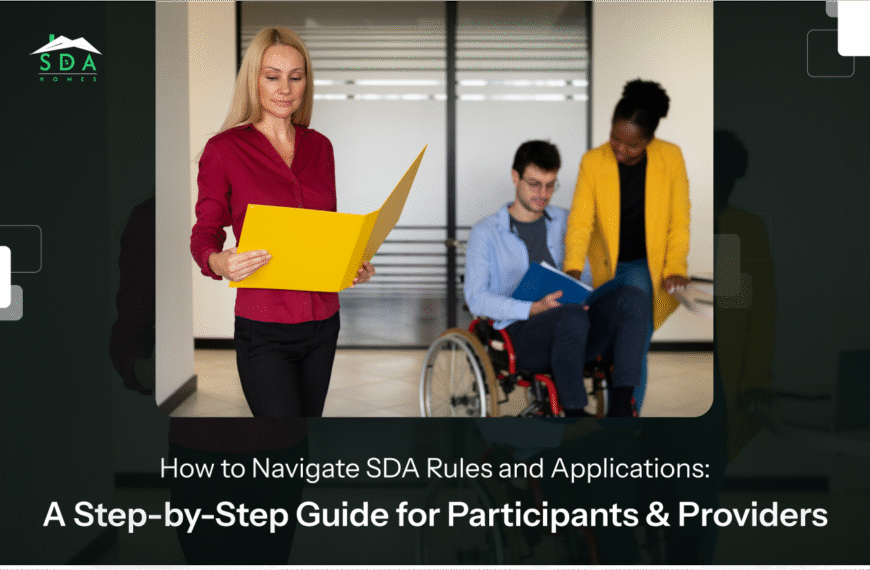Introduction
The 2025 rules for the Specialist Disability Accommodation (NDIS SDA Rules) in Australia are focused on improving choice, safety, and inclusion for people with disabilities. These regulations prove that SDA housing is genuinely supportive, empowering, and designed to meet the specific needs of participants with high support requirements. This is achieved by establishing clearer eligibility rules, raising the bar for safety and design standards, and encouraging residents to have a say in housing decisions. Additionally, the new framework gives participants more control over where and how they live by separating housing funding from care services.
What are the New NDIS SDA Rules?
SDA is specialized housing designed for participants with severe functional impairments or high support needs, which is financed by the National Disability Insurance Scheme, also known as NDIS. The 2025 rules include:
- Stricter Eligibility Requirements: Making sure that only people who actually require SDA assistance will get financial help.
- Clar Design Guidelines: Specific accessibility and safety features are provided by housing categories, including Robust, High Physical Support, and Improved Livability.
- Stricter Compliance and Monitoring: Quality and safety are maintained through routine inspection and evaluation.
Apart from these, housing funding and support services were kept separate to provide participants with more options.
These rule improvements encourage both responsible investment and better living conditions for participants.
Discover details of the NDIS SDA Rules 2025 for funding in our latest blog.
Supporting Choice Through SDA Rules
A key component of the revised NDIS SDA regulations is the provision of choice. They promote participant freedom in the following ways:
- Various kinds of housing: Participants can choose from group homes or apartments based on what best fits their lifestyle.
- Options for design categories: Participants select from a range of support and accessibility levels.
- Location preferences: Makes it possible to live close to loved ones, places of employment, or communities.
- Participant involvement: When making housing decisions, people with disabilities are actively consulted.
By allowing for customized living arrangements as opposed to a one-size-fits-all strategy, this participant-first model promotes dignity, independence, and satisfaction.
Improving Disability Accommodation Safety
SDA housing places a high priority on resident safety, and the updated regulations include strict building and design requirements. Some of the special features included in these houses are: wheelchairs, fall prevention, sturdy construction to prevent injuries, and emergency management plans catered to occupant needs.
In accordance with the law, providers must maintain protocol compliance. They make sure that homes are kept in good repair and have emergency backup plans. For instance, “high physical support” homes have specific features that allow for the safe use of assisted living devices and complicated equipment.
In addition to lowering hospital stays and emergencies, this all-embracing safety focus gives participants more peace of mind and opportunities for independent living. These regulations turn SDA homes from places of refuge into safe havens designed for people with fewer emergencies.
Promoting Inclusion and Social Participation
Being truly inclusive means more than just making sure places are physically accessible. The SDA regulations support a number of crucial goals:
- Making good use of technology/devices such as smart home systems and communication aids to help participants participate and connect within society and the community.
- Ensuring that people can readily access public transportation and community services helps keep them from feeling alone.
- Promoting independence by designing homes to allow residents to live independently and not be dependent on care all the time.
- Providing social opportunities for residents to engage in work, education, and leisure activities.
Together, these factors give people a sense of genuine inclusion in the larger community. Everyone’s quality of life improves, and their relationships get stronger as a result.
Impact of New NDIS SDA Rules on Providers and Participants
For Providers:
- More open rules improve housing quality and market confidence.
- Legal requirements and more and more accountability guarantees durable, moral operations.
- Strict certification procedures increase industry standards.
For Participants:
- Access for those who are actually in need is ensured by transparent and thorough eligibility.
- More flexibility in selecting living arrangements that align with individual needs through housing solutions
- Guarantees that the core benefits of SDA housing are safety and inclusion.
This cooperative approach supports the values of present-day disability support and empowers all SDA service providers in Australia.
Final Remarks
By highlighting their choices, safety, and inclusion, the NDIS SDA rules in 2025 represent a major step towards changing housing that actually supports people with disabilities. These rules take NDIS closer to realizing its goals and establishing clear requirements for eligibility, increasing the safety standards, and prioritizing participants when choosing housing. A healthy housing market will be the result of increased quality and responsibility for the new structure for market suppliers. For participants, this means feeling safe, accepted, and valued while living in a Home designed to meet their specific requirements.
Families, providers, and participants can all benefit from knowing and adhering to these guidelines as they navigate Australia’s changing disability accommodation market. If you wish to know more about NDIS SDA rules and their benefits, connect with SDA Homes, as our experts can provide more thorough policy and compliance guidelines.
NDIS SDA Rules Commonly Asked Questions
1. Which categories exist for housing design?
Robust, fully accessible, improved livability, and high physical support—all of which address varying degrees of need.
2. How do SDA regulations ensure safety?
SDA providers prioritize maintenance, run frequent audits, prepare for emergencies in advance, and adhere to building codes.
3. Can I, as a participant, select my SDA providers?
Yes, to improve living satisfaction and personal agency, the NDIS prioritizes participants’ preferences when selecting SDA providers.
4. How do support services fit into SDA?
They coordinate for the well-being of residents while providing tailored care apart from housing.
5. How do SDA homes handle emergencies?
They conduct and maintain seamless cooperation between support services and provide customized emergency response planning.





